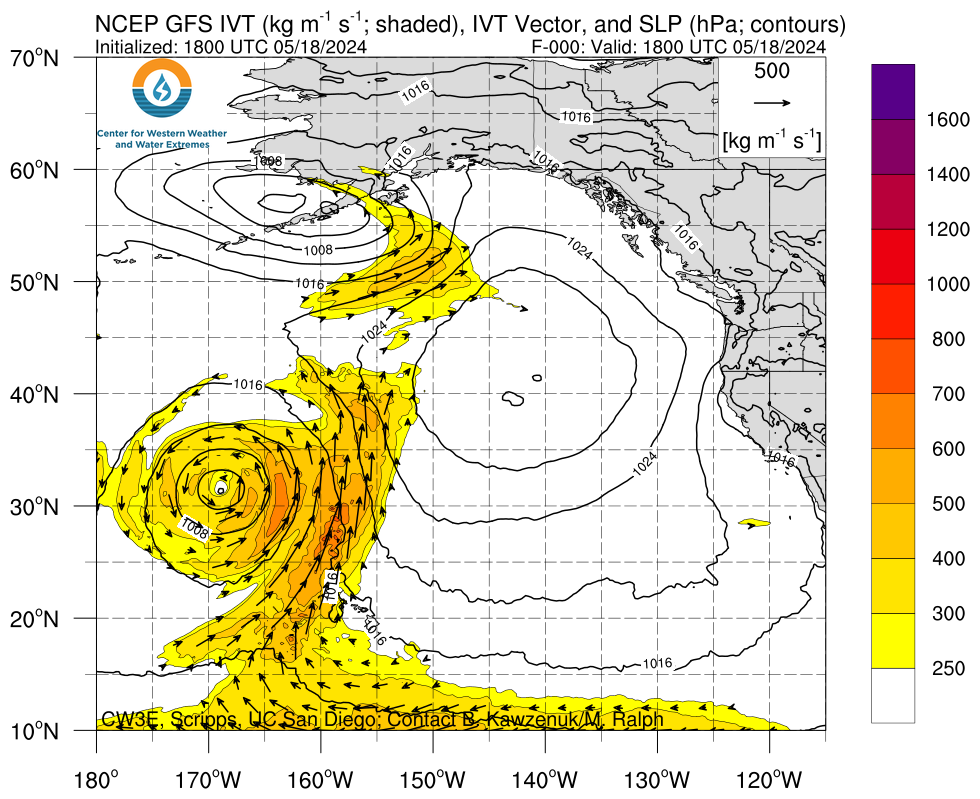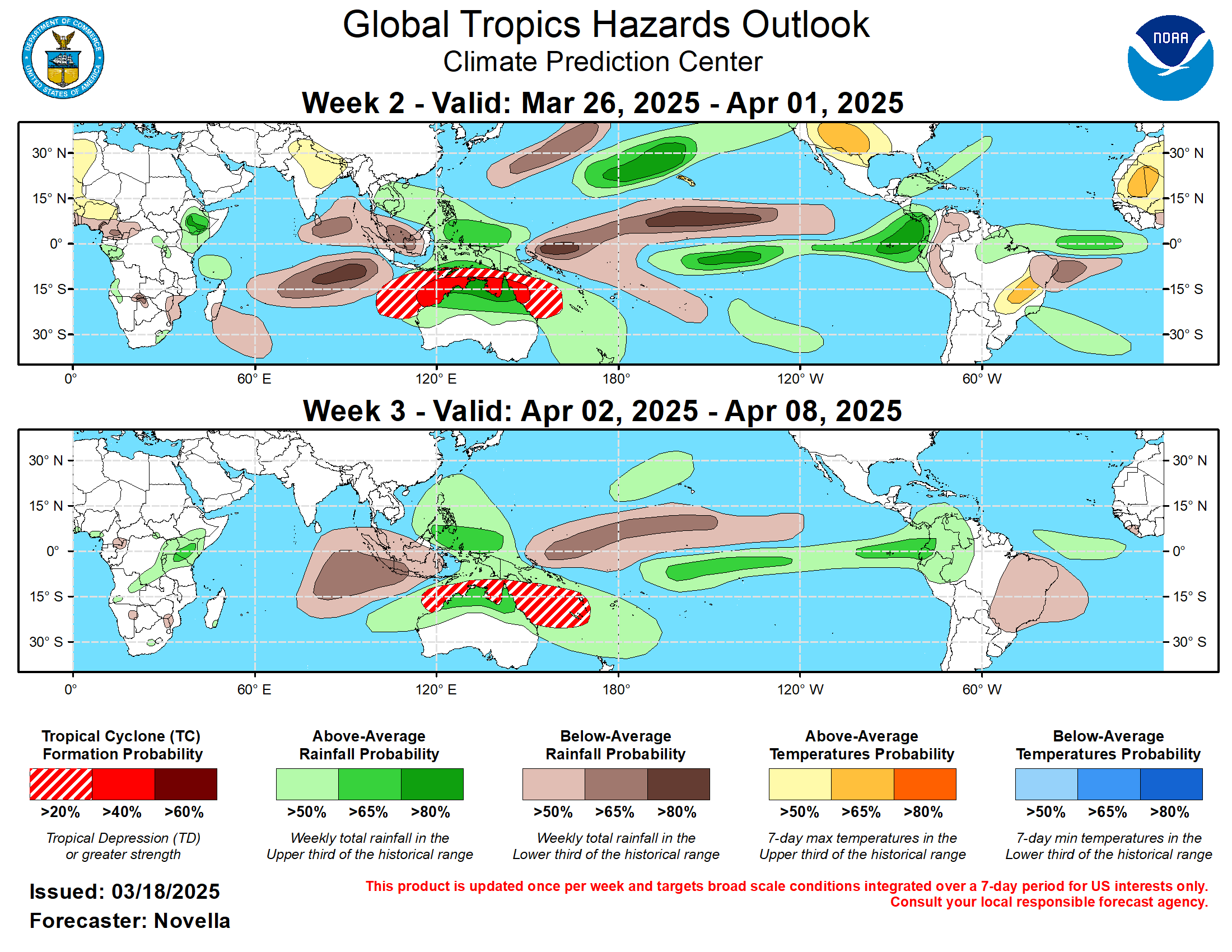This article focuses on what we are paying attention to in the next 48 to 72 hours. The article also includes weather maps for longer-term U.S. outlooks and a six-day World weather outlook which can be very useful for travelers.
First the NWS Short Range Forecast. The afternoon NWS text update can be found here after about 4 p.m. New York time but it is unlikely to have changed very much from the morning update. The images in this article automatically update.
Short Range Forecast Discussion
NWS Weather Prediction Center College Park MD
Sat Jul 27 2024
Valid 12Z Sat Jul 27 2024 – 12Z Mon Jul 29 2024…Scattered showers and thunderstorms continue across portions of the
South and Mississippi Valley this weekend with the risk for some flash
flooding……Hot weather is in store across portions of the Northern Plains and
Upper Midwest ahead of a cold front bringing the threat of severe
thunderstorms on Saturday and heavy downpours on Sunday……Monsoonal thunderstorms continue for portions of the Intermountain West
with isolated flash flooding possible…Scattered showers and thunderstorms will continue across portions of the
South and Mississippi Valley this weekend in the presence of very moist,
southerly Gulf flow. An upper-level wave over the Plains on Saturday will
encourage storms over the Middle and Lower Mississippi Valley and along
the Gulf Coast. A Slight Risk of Excessive Rainfall (level 2/4) is in
effect for portions of the Gulf Coast of Texas where recent heavy rainfall
over the past few days has left wetter antecedent conditions more
susceptible to scattered instances of flash flooding, though an isolated
flash flood risk will exist elsewhere. The wave will move eastward on
Sunday, helping to focus storm development over portions of the Middle
Mississippi/Lower Ohio Valley southeastward into the Tennessee Valley and
south to the Gulf Coast. The greatest concentration of storms/storm
clusters is expected along the leading edge of the wave over the Tennessee
Valley, where a Slight Risk of Excessive rainfall is in place for another
threat of some scattered flash flooding. The unsettled weather will help
keep temperatures down across the region this weekend, with temperatures
at or below Summer-time averages, especially for portions of central and
eastern Texas. Forecast highs are generally in the mid- to upper 80s, with
low 90s possible closer to the central Gulf/Atlantic coasts and into
Florida.To the north, a slow moving frontal system will bring shower and storm
chances to the Northern Plains/Upper Midwest Saturday. Plentiful moisture
with sufficient instability, as well as stronger upper-level flow arriving
over the region helping to strengthen deep-layer shear, will promote some
more intense thunderstorms. The Storm Prediction Center has issued a
Slight Risk of severe weather (level 2/5) over portions of eastern North
Dakota into northwestern Minnesota for the threat of large hail and
damaging winds. Some isolated flash flooding will also be possible. Then,
on Sunday, the front is expected to slow as it approaches Minnesota.
Increasing storm coverage along the front will lead to a greater chance of
heavier rain totals and flash flooding, with a Slight Risk of Excessive
rainfall over northern Minnesota. Further to the southwest, more isolated
storms ahead of the front over central South Dakota will continue to pose
a threat of severe weather, with a Slight Risk in place for some large
hail and damaging winds. Forecast highs ahead of the front will continue
to remain well above average, with highs in the mid-80s to low 90s for the
Northern Plains/Upper Midwest and mid- to upper 90s into the Central
Plains.More Monsoonal storms are expected on Saturday across portions of the
Great Basin, Rockies, and Southwest. Lingering moisture across the region
may lead to some locally heavy downpours, with isolated flash flooding
possible, particularly for terrain sensitive areas such as burn scars.
Storm chances will come down as upper-level heights begin to rise over the
region on Sunday, with a lingering chance over southeastern
Arizona/southwestern New Mexico. Forecast highs broadly across the West
will be at or a bit below average with an upper-level trough in place.
Highs will be in the 60s and 70s along the Pacific Coast, the 70s and 80s
for the Pacific Northwest, the 80s and 90s for interior California and the
Great Basin/Rockies, and 100s in the Desert Southwest.Elsewhere, conditions will be rather tranquil from the Great Lakes east to
the East Coast between weather systems. Some showers may begin to spread
into the Great Lakes region later Sunday as the Plains system approaches
from the west, while a coastal low could bring some showers to southern
New England. Forecast highs will generally be at or above average, with
highs in the mid- to upper 80s.
To get your local forecast plus active alerts and warnings click HERE and enter your city, state or zip code.
Learn about wave patterns HERE.
Then, looking at the world and of course, the U.S. shows here also. Today we are looking at precipitation.
Please click on “Read More” below to access the full Daily Report issued today.
| Notices: What would you like to learn about? Please provide that to me via the comment section at the end of the article. |
Now more detail on the 48-Hour Forecast (It is a 48 to 72 Hour Forecast actually)
Daily weather maps. The Day 1 map updates twice a day and the Day 2 and 3 maps update only once a day. These maps update automatically. But if that does not happen, you can get updates by clicking HERE
TODAY (or late in the day the evening/overnight map will appear) (Key to surface fronts shown on maps and you will then also be able to insert a city name or zip code and get a local NWS forecast).
TOMORROW
NEXT DAY
We have a new animation of the forecast which shows how things may play out over the next 60 hours. To update click ANIMATION. Doing so will get you to the dashboard. You can then step through the animation or hit LOOP on the upper right of the display. You will have to hit the back arrow ← at the top left on your computer to get back into this article. It is a little more trouble than before but I think NOAA scrapped the animation routine I was using so we have to keep up with “progress”.
The NWS Climate Prediction Center’s: Watches, Warnings, and Advisories plus other information can be found HERE. That takes you to the NWC Severe Weather Site. From there you can select among many categories of information. Remember to hit the back arrow ← at the top left of your screen to return to this article.
ATMOSPHERIC RIVERS
This tells us what is approaching the West Coast. Click HERE to update If I have not gotten around to doing the update. Here is some useful information about Atmospheric Rivers.
Below is the current five-day cumulative forecast of precipitation (Updates can be found HERE)
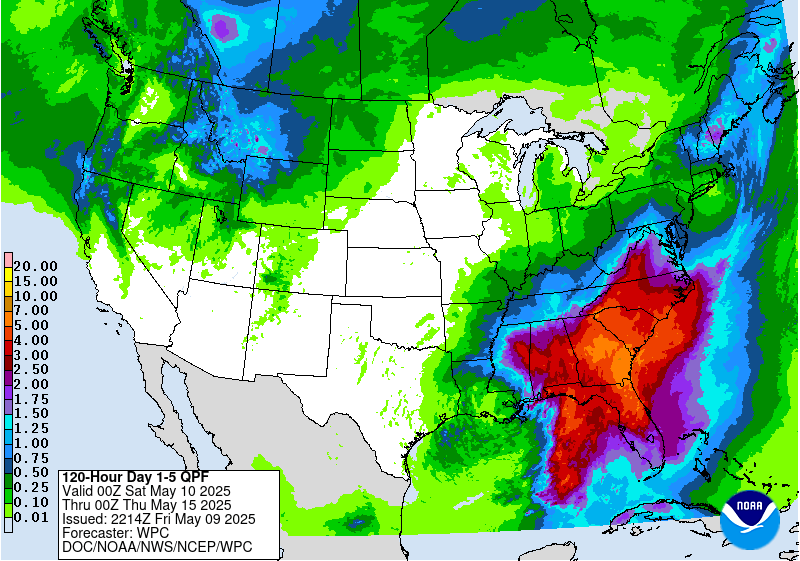
Ski SnowReports will Resume in the Fall.
Now we look at Intermediate-Term “Outlook” maps for three time periods. Days 6 – 10, Days 8 – 14, and Weeks 3 and 4. An outlook differs from a forecast based on how NOAA uses these terms in that an “outlook” presents information as deviation from normal and the likelihood of these deviations.
Below are the links to obtain updates and additional information. They are particularly useful if you happen to be reading this article significantly later than when it was published. I always try to provide readers with the source of the information in my articles. These links may also be useful for those viewing this article on a cell phone or other small screen.
| Days 6 – 10 (shown in Row 1) | Days 8 – 14 (Shown in Row 2) | Weeks 3 and 4 (Shown in Row 3 but updates only on Fridays) |
| https://www.cpc.ncep.noaa. gov/products/predictions/610day/ | https://www.cpc.ncep .noaa.gov/products/predictions/814day/ | https://www.cpc.ncep.noaa.gov/products/predictions/WK34/ |
Showing the actual maps. They should now update automatically. The Week 3 – 4 Outlook only updates on Fridays. So below is what I call the Intermediate-term outlook. On Fridays, it extends out 28 Days. That declines day by day so on Thursday it only looks out 22 days until the next day when the Week 3 – 4 Outlook is updated and this extends the outlook by one additional week.
| 6–
10
|
|
|
| 8–
14 |
|
|
| 3–
4 |
|
|
HAZARDS OUTLOOKS
Click here for the latest complete Day 3 -7 Hazards forecast which updates only on weekdays. Once a week probably Monday or Tuesday I will update the images. I provided the link for readers to get daily updates on weekdays. Use your own judgment to decide if you need to update these images. I update almost all the images Friday Night for the weekend edition of this Weather Report. So normally readers do not need to update these images but if the weather is changing quickly you may want to.
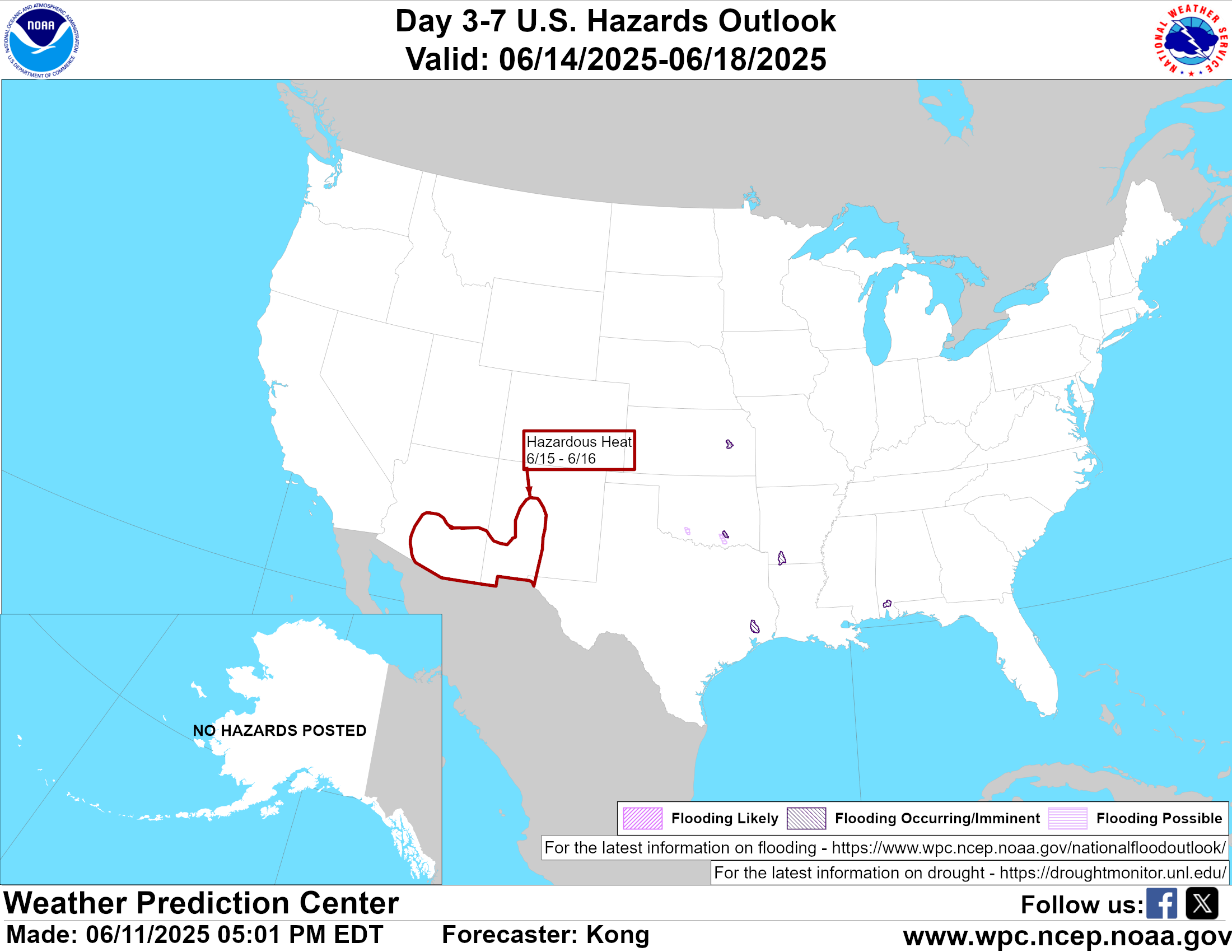
Temperature month to date can be found at https://hprcc.unl.edu/products/maps/acis/MonthTDeptUS.png
Precipitation month to date can be found at https://hprcc.unl.edu/products/maps/acis /MonthPNormUS.png
World Forecast [that website is has been intermittent so be patient]
Below are the Day 1 -3 and 4-6 forecasts for temperature and precipitation. Updates and much additional information can be obtained HERE
World Temperature Anomalies

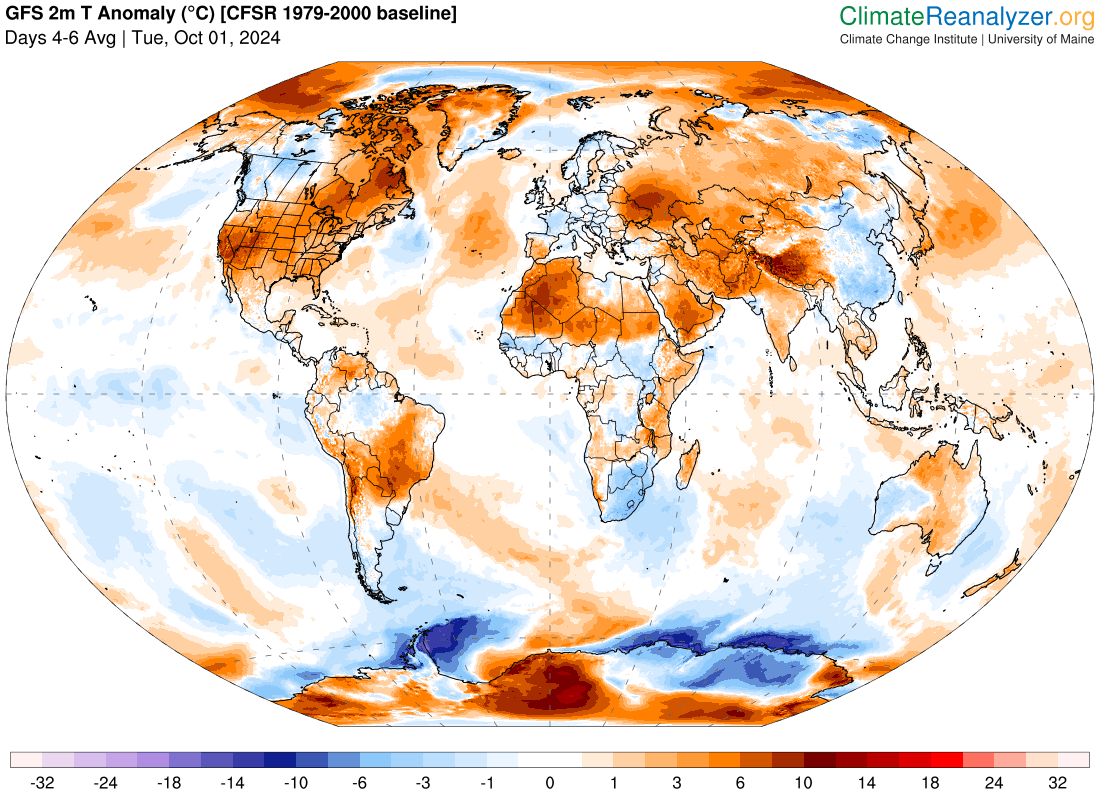
World Accumulated Precipitation
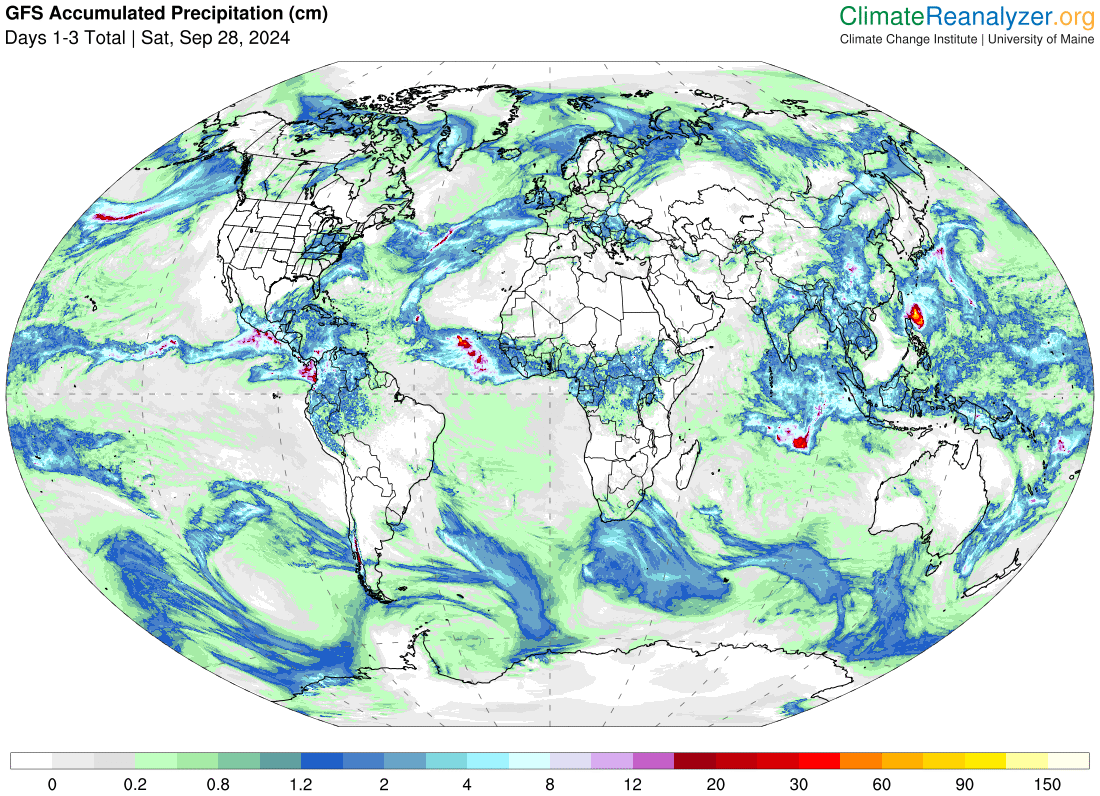

This information is provided by the University of Maine. They draw upon many different sources. There is a lot of information available at the link provided. I have just provided two useful forecasts. There are probably over a hundred different forecasts available from this source.
Worldwide Tropical Forecast (This is a NOAA Product)
This graphic updates on Tuesdays) If it has not been updated, you can get the update by clicking here Readers will only have to do that if they are reading this article much later than the date of it being published.
Information on Tropical Storms can be found HERE. Western Pacific information can be found HERE. Note that unless there is an out-of-season storm the below images will not update until the National Hurricane Center starts their seasonal update of these maps on June 1. I include them simply because there can be an out-of-season event in which case it should show up in these maps.


–
| I hope you found this article interesting and useful. |

